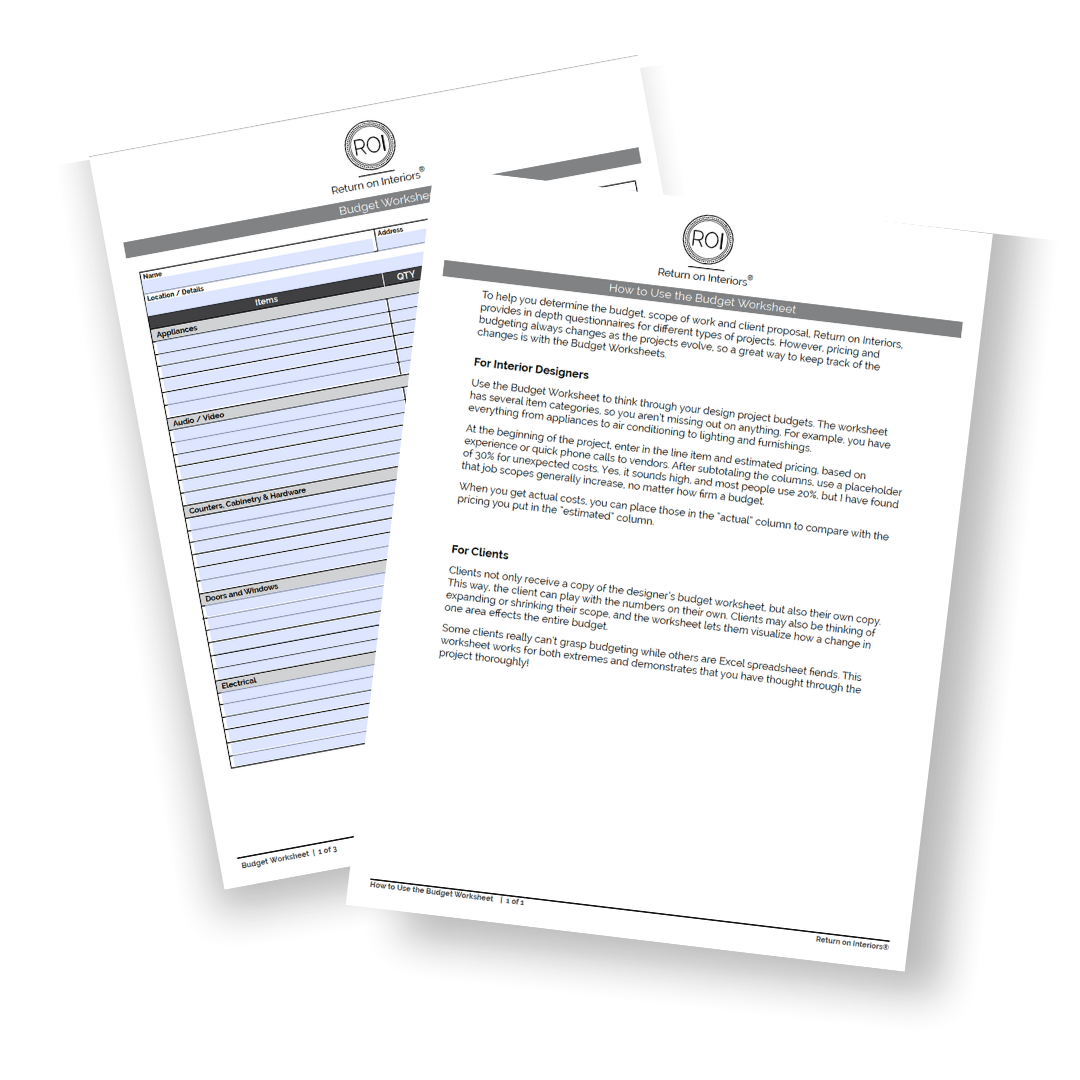
The Good/Better/Best Way to Work a Budget
One of the toughest things in the interior design business is to get a client to tell you what their design budget is. In their minds, they don't want to give you the REAL amount because they're afraid you'll spend every bit of that and maybe more! But all you want to do is get a true sense of what they're willing to spend. UGH! But I have a great way to present my project budgets - it's the good/better/best method and it works every time. Here's how to set one up for your own business, AND how to present it to your clients!
Review Your Projects
The first step is to group your projects into Good, Better, or Best. How much did your clients spend on furnishings? Did you use top-shelf sources, mid-range, or some less expensive things. Generally, you should be able to rank them by budget. So you may have a group of projects that you did for $100,000 to $250,000, then another that ranges between $250,000 to $500,000, and a final group that's over $500,000. The dollar amount will, of course, depend on your business - but you get the idea! It's great to have a dollar amount fixed to every project in your portfolio. That allows you to quickly assess a budget when the client wants the very best furniture and accessories, or when they want to cut corners on some things, but not others.
 Illustrate It
Illustrate It
Now that you have your good/better/best projects, you need to be able to show your clients what that looks like. You know what your most popular projects and photos are. So you want to use those photos to illustrate what "good" projects look like versus what "best" projects look like. Create a one-sheet or a PDF that illustrates each category's details. So, for example, your "best" category would have stunning photos and would have bullet points like:
- Includes custom furnishings that cannot be found anywhere else
- Includes custom cabinetry
- Production furniture brands may include McGuire, Baker, Roche Bobois, etc.
- Curated art
- Custom drapery with fabric sources such as Schumacher and Fortuny
And your "good" category may say something like:
- Mix of products that will range from Universal to Chaddock
- Accessories will be a mix of retail to objects from sources like Regina Andrew and Noir
- Gorgeous shades and drapery from Shade Store
You want to give them an idea of the sources you may use and how the look will change based on the budget.
Presenting Your Budget
Now when you talk about budget with your clients, you'll have a great way to nail down their budget range and what they want. You can ask your clients which projects in your portfolio they are most drawn to, and then discuss what that means for sources and costs. They may want a super-custom look and not understand what that means for their budget. Helping them to see the difference in design quality is a great way to lead them to the right budget for their project. It's easier for them to adjust how they're thinking about their budget when you show them concrete "evidence" of how the costs play out! This way, you're letting them know exactly what they can expect for a good/better/best budget, and it's an easier conversation.
My FREE Design Budget Worksheet can also help you get down to exactly what a budget should be for each project. Download it here and nail those budget presentations every time!


 Get almost 50
Get almost 50



